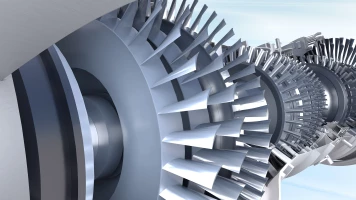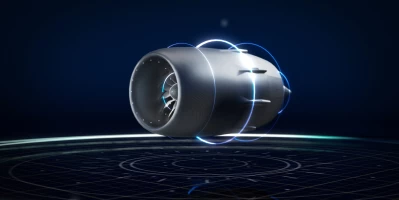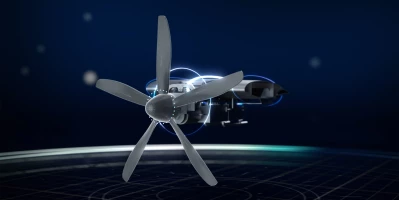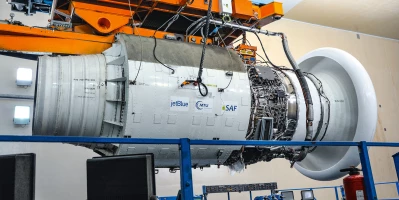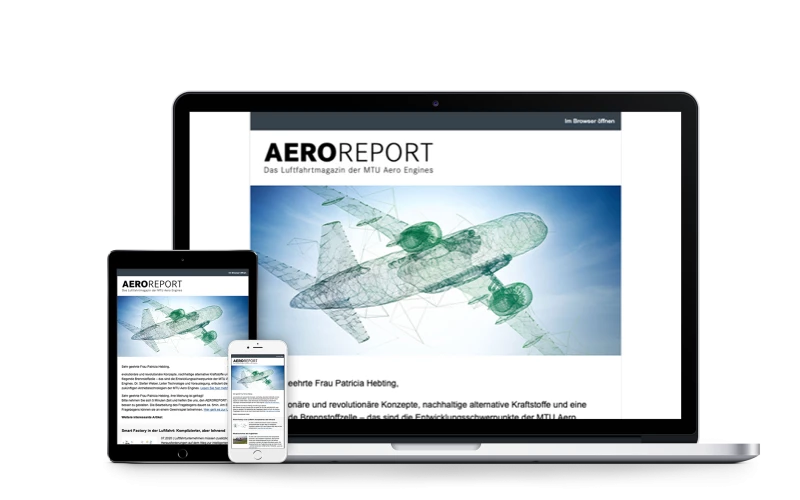innovation
Geared turbo fans: The next generation
By the end of the decade, the Airbus A320neo is set to have an even more fuel-efficient engine. To make this possible, two key components of the Geared TurbofanTM are currently undergoing tests at MTU Aero Engines.
11.2016 | author: Patrick Hoeveler | 5 mins reading time
author:
Patrick Hoeveler
is a journalist with more than 15 years’ experience in the field of aeronautics and aerospace reporting.
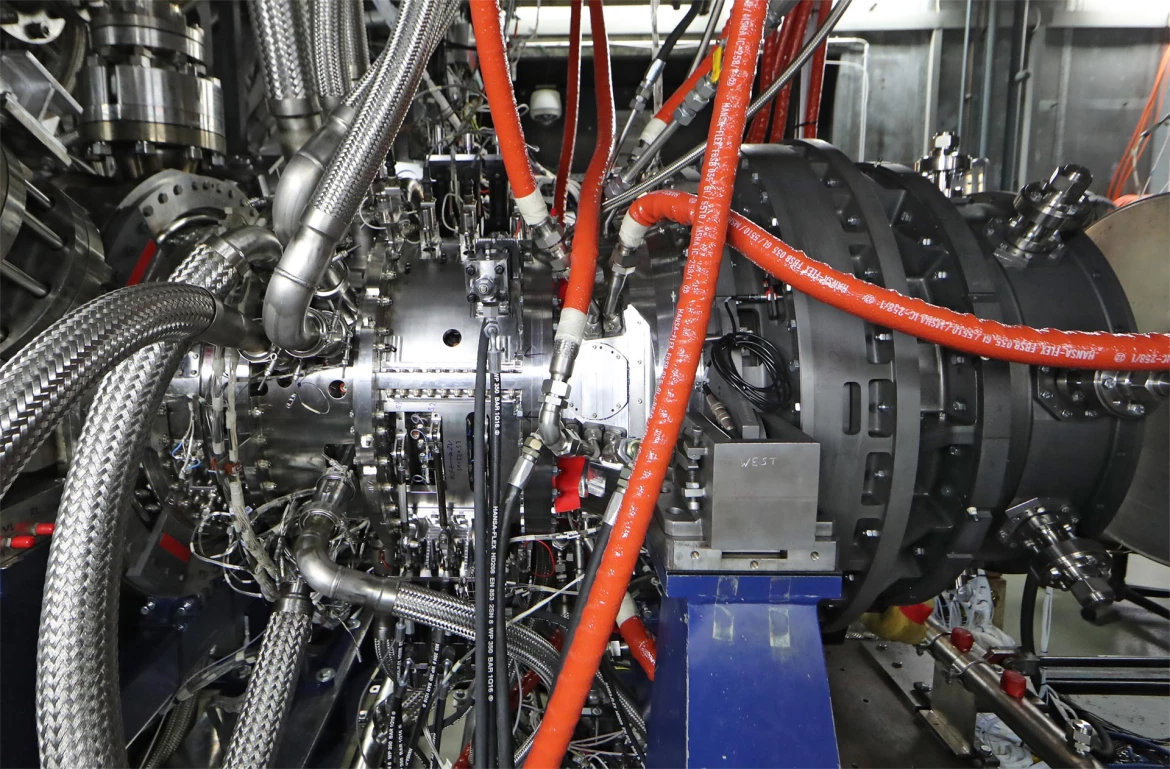
High-tech guessing game: Behind all the cables, hoses and supporting structures, it’s hard to make out the latest offspring of the partnership between MTU Aero Engines and Pratt & Whitney. The core module of the next generation in the geared turbofan family is being tested on a rig at the German engine-maker’s Munich location. Some 1,300 measurement points have been wired up on the high-pressure compressor to record the widest possible number of parameters. Such rig tests involve a lot of time and effort, but the engineers consider them indispensable and even plan to test two different engine components this year—with the support of the aeronautics research program funded by the German Federal Ministry for Economic Affairs and Energy. “Rig tests are an essential element in our technology process. We use them to verify the performance of innovative products under the relevant operating conditions. This helps us prepare the way for the next wave of new technologies,” says Dr. Stefan Weber, Senior Vice President Technology and Engineering Advanced Programs at MTU. It is part of the company’s research policy to carry out such tests on its two key products, the compressor and the low-pressure turbine, at four-to-five-year intervals.
In this particular case, the focus lies on enhancements to the PW1100G-JM Geared TurbofanTM. To maintain the technological lead established by the Airbus A320neo engine, which only recently entered service, efforts must be made to further reduce its fuel consumption. This will be achieved by improving the performance of the high-pressure compressor, developed in collaboration with Pratt & Whitney, and that of MTU’s high-speed low-pressure turbine. This is not an easy task, given that both components already have an extremely high degree of fuel conversion efficiency. “We will have to work hard on a number of issues that, in the end, will enable the progress needed,” says Dr. Gerhard Kahl, project manager in charge of compressor rig 268. Because the compressor components have to match the dimensions of the original engine, the number of stages has not been increased. Attention has therefore been focused on optimizing the blade profile and reducing parasitic losses. In engineering parlance, parasitic losses are unwanted phenomena that interrupt the flow of air, such as leakages or gaps between rotating and static parts. In their search for potential improvements, the engineers make use of increasingly sophisticated design tools. But the joint MTU and Pratt & Whitney development team also has to make sure that this doesn’t affect the compressor’s operating stability. For this reason, the rig tests not only include analyzing aerodynamic factors but also record data concerning temperature, gap widths, vibrations and many other parameters.
Claire MTU’s technology agenda shows which efficiency improvements future engines must achieve by 2050 compared to the V2500.
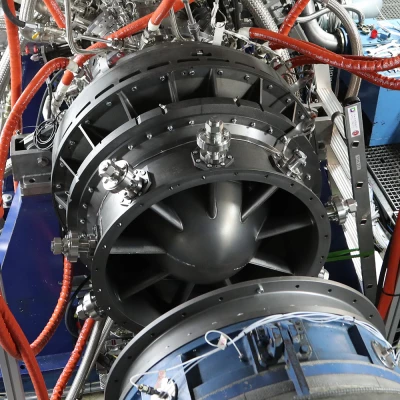

Ready for testing Compressor rig 268 is prepared for a test run at MTU Aero Engines in Munich. It will be testing further developments for the A320neo’s PW1100G-JM engine.
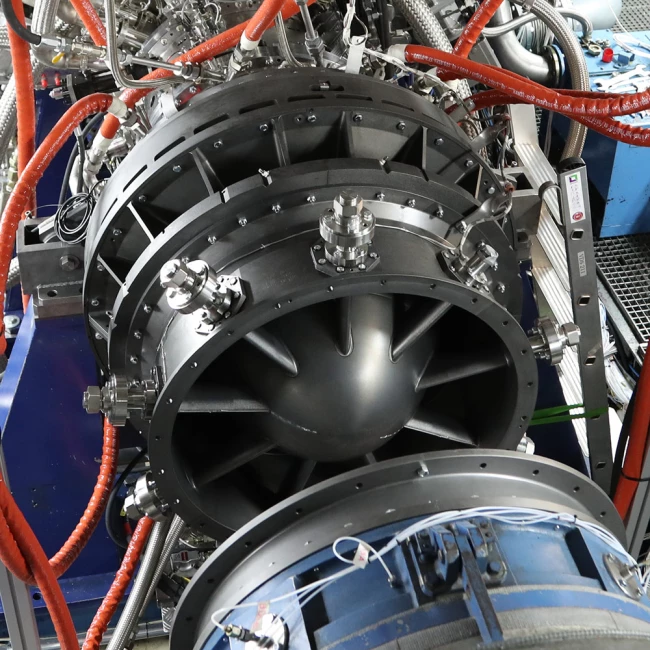
Ready for testing Compressor rig 268 is prepared for a test run at MTU Aero Engines in Munich. It will be testing further developments for the A320neo’s PW1100G-JM engine.
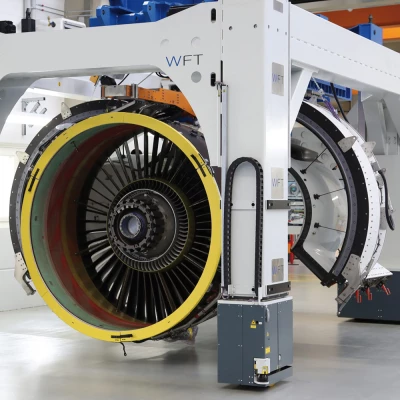

Summary Rigs contribute to the success of an engine. Currently, one of the most successful programs is the A320neo’s PW1100G-JM engine—seen here on the way to the test stand.

Summary Rigs contribute to the success of an engine. Currently, one of the most successful programs is the A320neo’s PW1100G-JM engine—seen here on the way to the test stand.


Testing turbines – a night at the Stuttgart altitude test facility
The “altitude test facility” at the University of Stuttgart allows for turbines and other engine components to be tested under real cruising conditions.
When the compressor is mounted on the test rig, it is powered by an array of electric motors with a combined output of 16 megawatts—the equivalent of 18 Formula One racing cars. After passing through the compressor, the air is throttled down to atmospheric pressure and evacuated via an exhaust chamber. “MTU has accumulated many decades of experience in engine assembly and testing. This gives us a head start in our current activities,” says Kahl. By the end of the year, the exhaustive compressor testing schedule will have racked up 140 hours.
The rig testing is already finished for enhancements to the low-pressure turbine originally developed for the geared turbofan under the sole responsibility of MTU. These tests, totaling 100 hours, were carried out on the high-altitude test rig at the University of Stuttgart, where MTU traditionally tests its turbines. In this case too, the designers verified the efficacy of the improvements to the engine’s aerodynamic performance. “Without changing the dimensions, we redesigned the blades and further reduced the aerodynamic losses occurring in the peripheral areas of the turbine,” says Dr. Irene Raab, project manager in charge of turbine rig 456. A detailed analysis of the results is now in progress. The next stage, scheduled for next year, involves testing the complete second-generation geared turbofan. After that, the even more fuel-efficient GTF will be required to undergo the usual certification procedures, some of which will probably be carried out in Munich. And that’s not all: Like their colleagues in the compressor department, the turbine team also has developed more innovations than can be implemented under the present program. They could also benefit future engine generations.







